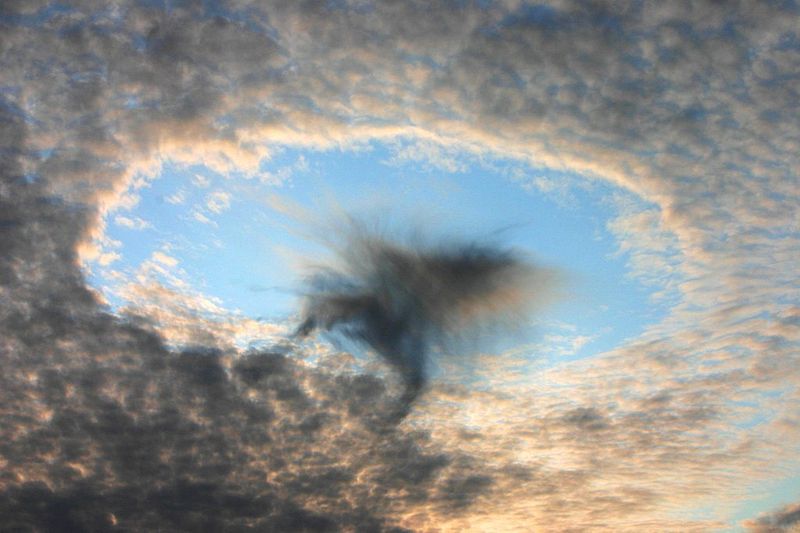Flying Rainmakers: Airplanes Alter Weather By Punching Holes in Clouds

Airplanes may alter the weather around airports to a small degree by punching holes in clouds and even causing snow or rain, a new study indicates.
Looking at weather data from seven airports located in mid- to high-latitude areas, the researchers found that landing and departing flights had as much as a 6-percent chance of inadvertently "seeding" the clouds they punched through and causing precipitation.
This inadvertent rainmaking by air traffic probably isn't important on a global scale, but it could mean more rain or snow in regions around airports, particularly at higher latitudes, the authors write in the July 1 issue of the journal Science. [Holey Clouds: Gallery of Formations Cut by Airplanes]
How they do it
For decades, large holes in clouds baffled observers, and, at least in the case of one suspiciously saucer-shaped indentation over Moscow, even led to theories of UFO visitation. In research published in 2010, Andrew Heymsfield, a senior scientist at National Center for Atmospheric Research in Boulder, Colo., and his team offered an explanation for the strange clouds by linking the cooling effect of airplanes to these mysterious gaps.
Under normal conditions, clouds at temperatures between 0 and minus 40 degrees Celsius (32 and minus 40 degrees Fahrenheit) contain suspended, super-cooled droplets of liquid water.
An airplane, powered by jet engines or propellers, "seeds" clouds like these by expanding and cooling the air that flows under its wings or through its propellers. This cooling creates ice, which attracts the super-cooled water droplets. Together, these grow heavier and create snow or rain, which may plummet to the ground or evaporate aloft. In the hole-punch clouds, this appears as the signature wisps of ice crystals or snow within or below them.
Sign up for the Live Science daily newsletter now
Get the world’s most fascinating discoveries delivered straight to your inbox.
This hole-creating process occurs in liquid clouds below about minus 10C (14F) for propeller aircraft and minus 20C (minus 4F) for jets, according to Heymsfield.
This process is known as cloud seeding, and it can be done intentionally to alter weather. However, in this case, airplanes' cloud seeding effect is entirely accidental.
Rainmaking planes
To better understand hole-punch clouds, Heymsfield and colleagues followed the growth of 92 holes and canals — long streaks cut when a plane's path is more horizontal — through satellite data.Some reach lengths of more than 62 miles (100 kilometers) and lasted for four or more hours. Using Federal Aviation Administration tracking information, they found that a full spectrum of aircraft — from jets of all sizes to planes equipped with propellers — cut through the clouds.
They then compared satellite observations with simulations run using a weather model, and found that the airplane's introduction of ice created patterns of air movement upward in the hole and downward at the sides, causing the hole to expand for periods as long as an hour.
And finally, Heymsfield and colleagues looked at weather around seven airports, including major mid- latitude ones like Chicago O'Hare and one in Antarctica to see how frequently this accidental cloud seeding might happen.
Prop planes have as much as a 6 percent average probability of seeding clouds throughout a year, while jet aircraft are slightly less likely at 2 to 3 percent. This effect is stronger at higher latitudes because low-lying clouds are more common, he said.
You can follow LiveScience writer Wynne Parry on Twitter @Wynne_Parry. Follow LiveScience for the latest in science news and discoveries on Twitter @livescience and on Facebook.












